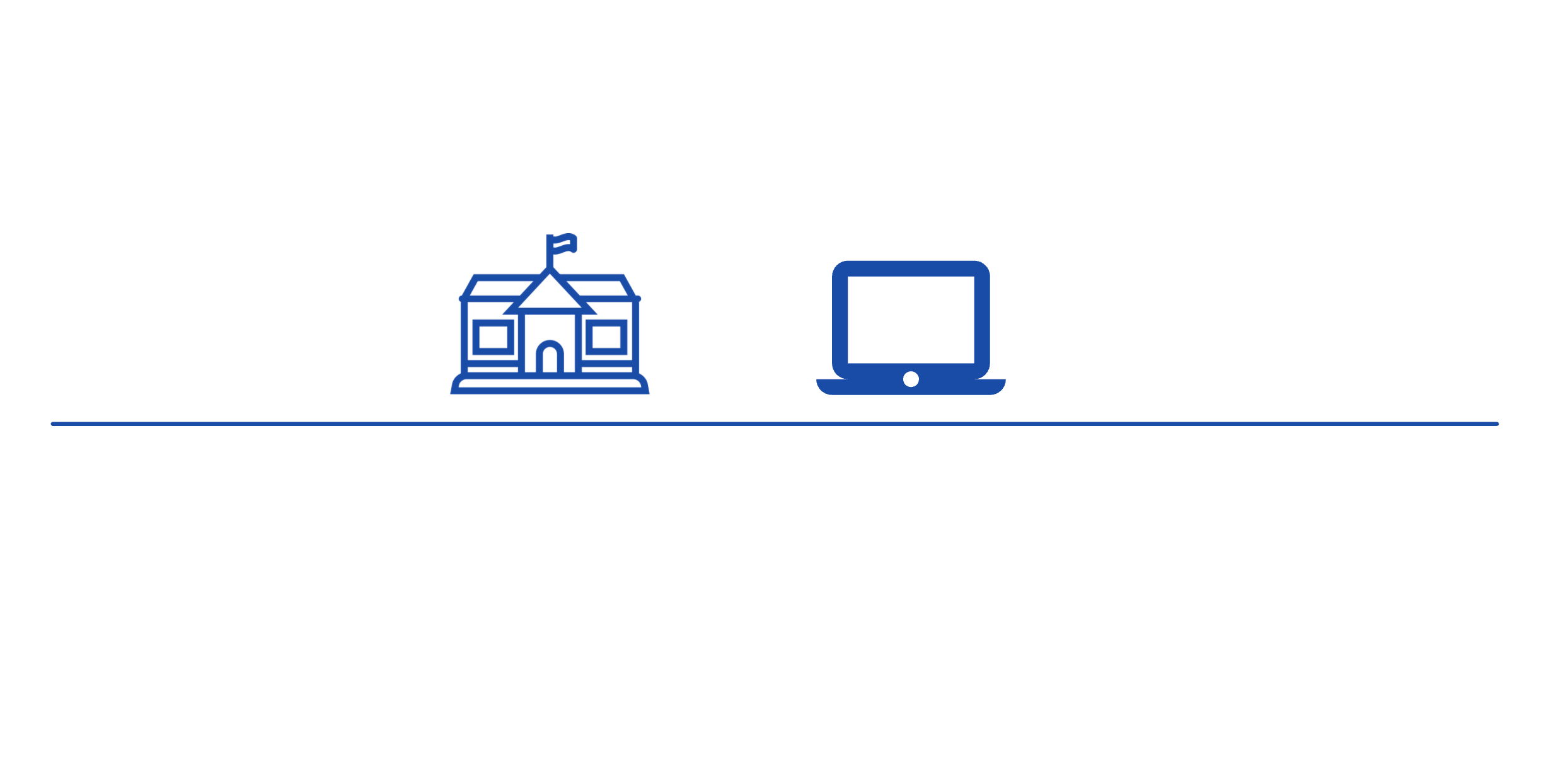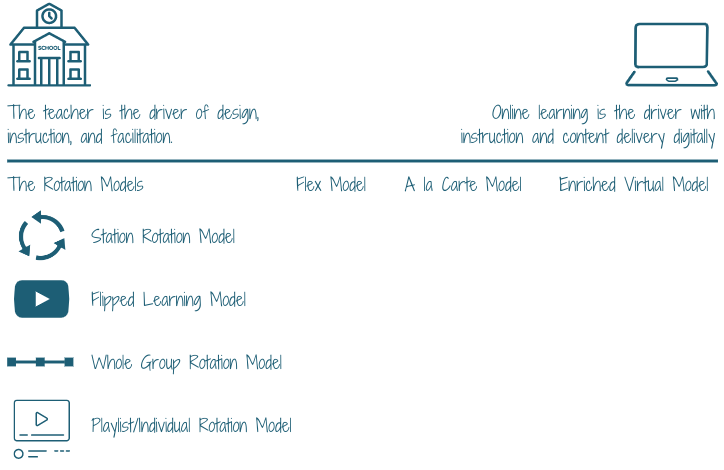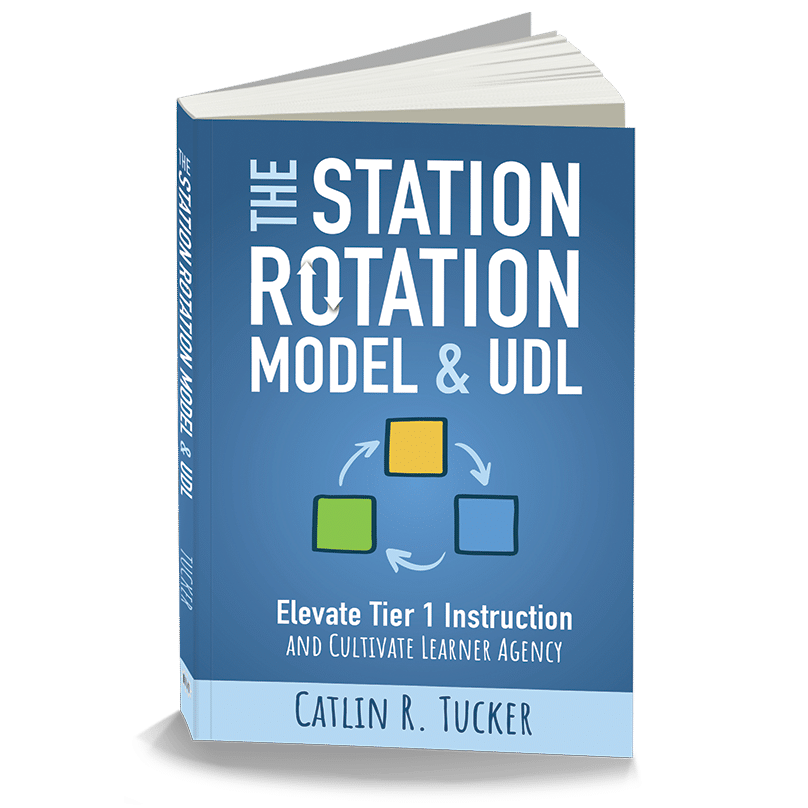The pandemic has elevated the phrase “blended learning.” When schools closed or shifted to hybrid schedules, many institutions turned to blended learning to navigate the new demands placed on teachers and educational institutions. As an outspoken advocate for blended learning over the last 10 years, I was initially excited to see so much momentum in this area. However, as schools prepare to welcome students back for in-person learning, I’ve had several encounters with school leaders who seem to think that returning to in-person learning means there is no need for blended learning anymore. This perspective stems from a lack of clarity about what blended learning is and why it is valuable.
What Blended Learning Is
Let’s start with a clear definition.
Blended learning is active, engaged learning online combined with active, engaged learning offline to give students more control over the time, place, pace, and path of their learning.
A key aspect of this definition is positioning the students as “active agents” in the lesson or learning experience. The students should be doing the heavy cognitive lift of making meaning. In a blended learning environment, the students are doing the thinking, discussing, making, questioning, exploring, collaborating, and reflecting.
Blended learning can happen entirely in a classroom, online with strategic use of synchronous video conferencing sessions and asynchronous work, or a blend of the two. The idea that teachers returning to classrooms don’t need or won’t benefit from learning about blended learning models signals a lack of understanding about what this term actually means.
When compared to the whole group, teacher-led model, the benefits of blended learning include:
- Giving students the agency to make key decisions about their learning
- Differentiating more consistently and effectively
- Partnering with students to begin personalizing their learning paths
- Shifting control over the pace of learning to students
Teachers returning to classrooms for the new school year can leverage models like the station rotation, whole group rotation, flipped classroom, and playlist to design student-centered learning experiences that shift control to the learner.
When I work with teachers, I emphasize the value of building a dynamic skill set composed of many different approaches to designing and facilitating learning. Just like in life, no one tool solves every problem. The same is true for teachers. There is no single instructional model that will work for every learning outcome. We must approach our work with a high level of intentionality, selecting the best model for the objectives of a specific learning experience.
What Blended Learning is Not
It is also important to highlight what blended learning is not. A technology-rich classroom does not equate to blended learning. Every student can have a device and still not control any aspect of their learning experience. Simply adding technology to the mix does not mean students are active agents in the learning process or have opportunities to control the time, place, pace, and path of their learning.
I’ve also heard the phrases blended learning and personalized learning used synonymously, yet they are not the same thing. Blended learning creates exciting pathways toward personalization, but personalization requires a partnership between the teacher and the learner. This partnership is easier to achieve in a blended learning environment where teachers have the time and space to work directly with students, providing individualized instruction, support, and feedback. Conferencing is another routine that teachers can build into a blended learning environment that allows them to personalize a student’s learning experience more effectively. Conferencing creates regular opportunities to discuss student progress, identify areas of need, and customize their learning path to ensure they continue growing and developing.
Moving Forward
The last year and a half have presented a myriad of challenges for educators and educational institutions. With those challenges have come exponential growth. I want that momentum to continue. I don’t want teachers to hear the message that “The pandemic is over. We don’t need blended learning.” Returning to business as usual and teaching the same way we did pre-pandemic would be a lost opportunity to improve the quality of learning for students. Instead, teachers should be encouraged to continue blending active, engaged learning both online and offline to give students more agency regardless of the learning landscape.
Leaders looking to support teachers with self-paced online learning opportunities can request a quote for my Getting Started with Blended and Online Learning and my Advancing with Blended and Online Learning Courses!
The Station Rotation Model and UDL: Elevate Tier I Instruction and Cultivate Learner Agency is available now! I’d love for you to check it out, share it with a colleague, and let me know what resonates most with you. If you have any questions about the book, please post a comment!
School leaders interested in using the book for a staff-wide study can place a discounted bulk order for 10 or more copies. If you and your teachers need additional support, I offer customized professional learning that is hands-on, practice-based, and tailored to your team’s needs. Together, we can support your teachers in developing their UDL practice, differentiating instruction more effectively, and elevating Tier 1 instruction. We can even utilize the Station Rotation Model to create space for Tier 2 support and Tier 3 intervention within general education classrooms. And, we can explore how this model can help us position students as active agents leading their learning!




27 Responses
“Conferencing is another routine that teachers can build into a blended learning environment that allows them to personalize a student’s learning experience more effectively. Conferencing creates regular opportunities to discuss student progress, identify areas of need, and customize their learning path to ensure they continue growing and developing.”
I like how you mention conferencing. This could be online conferencing with individual students but, usually, this would have to occur outside regular class time, which many teachers are unwilling to do unless they have additional compensation. Most public schools do not have time built into the day where this might occur. Even collaboration between teachers on their work and issues for which they might benefit from hearing others’ perspectives is often non-existent or so limited as to be useless.
We need a new model/paradigm for how teaching and learning take place.
Yes! Thank you for being a support this year for so many of us who were looking for a way to meet the challenges of distance learning. I’ve learned a lot…but to be honest, I’m a bit nervous about being able to put it all into practice once I’m back in the classroom. Of course, that’s probably just the butterflies talking. After 16 years of teaching, I still always feel unprepared no matter how much I plan for the new year. I’m looking forward to trying station rotations in person. I had to learn that breakout rooms were just like small groups, and now I have to remind myself that small groups are basically breakout rooms! This will be another year of adjustments, but perhaps every year really is, and that’s exciting! And though last year was a year like no other, I’m sure this one will provide teachers with as yet unknown challenges. And because teachers like a challenge, we’ll rise to meet it.
Hi Heather,
You are so welcome! I’m thrilled my work has supported you in the last year and a half! I know it must feel daunting to pull some of this work into your classroom, but it is totally doable. Prior to the pandemic, most of the work I did with teachers was exclusively in the classroom so these models work beautifully in person. Although it will definitely be another year of adjustments, I believe the growth that happened this year (as uncomfortable as it was) will make the return to classrooms even richer!
I wish you a wonderful school year!
Take care.
Catlin
It’s nice
Hi Caitlin,
Just to clear my own confusion. Many K-5 classrooms implement Daily 5 for their literacy rotations, one of the rotations includes “Listen to Reading”. Most of the time, students are on online reading programs like “MyOn”, or “Epic”. Some students requiring intervention are on programs like “Imagine Learning”. Would you consider this as blended learning? There are many indicators of blended learning in Daily 5, but not enough researched articles about the relationship can be be found online.
Thanks so much !
Hi Jennifer,
Yes, if students are moving through stations and at least one station is an online learning activity, then it would fall under the umbrella of blended learning.
Catlin
Hello, Dr. Tucker!
Thank you so much for sharing your ideas on incorporating blended learning in classrooms; I enjoy reading your thoughtful strategies on personalizing learning for students. I am working to communicate the benefits of blended learning to the teachers in my district and I am creating a monthly newsletter that highlights strategies and resources about this model. I lead professional learning in the district where I model blended learning whenever possible, and I am hoping to work more with our teachers on best practices and to encourage them through constant conversations and one-on-one support. My question to you is if I have permission to use portions of this specific blog post (with credit and proper citations, of course!) as a resource in my upcoming newsletter? I would include direct links to this post and I would be happy to share the newsletter with you before I publish it.
Of course, I understand if this request is not approved – I am a former media specialist and would never violate copyright! Thank you for your consideration.
Hi Becky,
Thank you for asking! You are welcome to include portions of my blogs with credit and a link to the original post. I would also love it if you told your teachers where they can find me on Twitter or Instagram if they want to connect since I share resources each week they might find valuable.
I’m thrilled to hear you are supporting teachers in this work!
Take care.
Catlin
Thanks for sharing literacy rotation. Still learning blended learning
I am excited to try blended learning in my physical education clases.
I found the idea of conferencing very interesting and will start that when the kids return. It will be a great way to find out what they are grasping and what objective may need to direct. It is also the way to build those relationships with our students as they are private and will give them the chance to share their ideas in a situation that is not threatening.
Thank you for sharing this. I am still learning how to effectively implement this style of teaching in my classroom. I teach special needs students so they need intense and intentional instruction.
I am very excited to learn more about blended learning and its impact in our kids, to see how they integrate tecnology and grow.
Blended learning sounds exciting for the student. As a teacher it seems to be challenging but the outcome seems to be productive for the student. Can’t wait to learn more.
Thank you for sharing this. I can’t wait to begin my journey to becoming a more effective blended learning teacher.
You’re welcome, Joseph!
I am excited to see many examples of how blended learning would look in the kindergarten classroom.
Hi Brenda,
Below are some examples of stations that I’ve seen kindergarten teachers use. It definitely takes onboarding, time, and practice to get students that age to move through a station rotation, but they are capable with the necessary support.
Teacher-led station: Use the “I do, we do, groups do, you do” to read a text and guide students in asking and answering questions about that text
Online station: Work with adaptive software (e.g., Lexia or Dreambox), watch a story on Storyline Online
Offline station: Printing, coloring, work with manipulatives
Take care.
Catlin
Where intentions are good, I believe especially K-3 teachers should focus on face to face teaching if possible. Teachers are teaching students to become critical thinkers. However I am interested to see if there are concrete examples of how blended learning would look in the younger grades.
Hi Brian,
Ultimately, blended learning should free teachers to work with small groups of younger learners, allowing them to more effectively differentiate and personalize the learning for individuals and groups of students. Blended learning should strive to leverage the technology to free the teacher to spend more time working directly with learners. Most elementary teachers I have worked with use the station rotation model to accomplish this goal.
Here’s are examples:
Teacher-led station: Differentiated reading instruction or math instruction
Online station: Work with adaptive software (e.g., Lexia or Dreambox), video lesson, kid-friendly podcast
Offline station: Printing, coloring, work with manipulatives, practic problems
Take care.
Catlin
I like the idea of station rotation allowing students the opportunity to engage in reinforcement of whole group skills taught.
Obtaining the blended learning templates would be a great strategy to use in the classroom. It will help me gain an understanding of blended learning.
Thanks for sharing.
Thank you for sharing .
Thank you for sharing .Obtaining the blended learning templates would be a great strategy to use in the classroom. It will help me gain an understanding of blended learning.
A very motivating way to attract your student’s interest and attention and participation in class! It also motivates the teacher himself!
thank you for sharing!
You’re welcome! So glad this was useful.
Take care.
Catlin